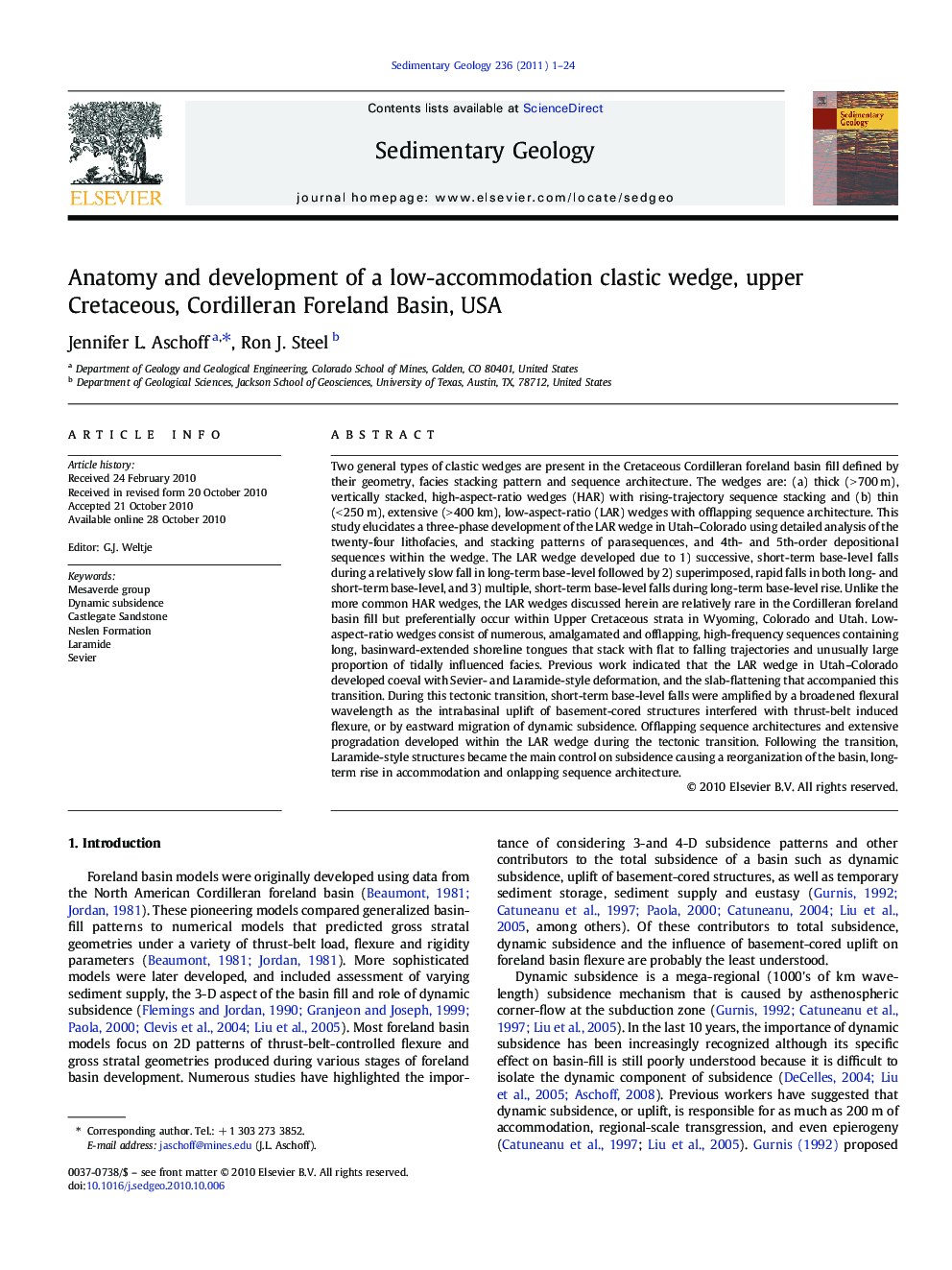| کد مقاله | کد نشریه | سال انتشار | مقاله انگلیسی | نسخه تمام متن |
|---|---|---|---|---|
| 4690125 | 1636111 | 2011 | 24 صفحه PDF | دانلود رایگان |

Two general types of clastic wedges are present in the Cretaceous Cordilleran foreland basin fill defined by their geometry, facies stacking pattern and sequence architecture. The wedges are: (a) thick (> 700 m), vertically stacked, high-aspect-ratio wedges (HAR) with rising-trajectory sequence stacking and (b) thin (< 250 m), extensive (> 400 km), low-aspect-ratio (LAR) wedges with offlapping sequence architecture. This study elucidates a three-phase development of the LAR wedge in Utah–Colorado using detailed analysis of the twenty-four lithofacies, and stacking patterns of parasequences, and 4th- and 5th-order depositional sequences within the wedge. The LAR wedge developed due to 1) successive, short-term base-level falls during a relatively slow fall in long-term base-level followed by 2) superimposed, rapid falls in both long- and short-term base-level, and 3) multiple, short-term base-level falls during long-term base-level rise. Unlike the more common HAR wedges, the LAR wedges discussed herein are relatively rare in the Cordilleran foreland basin fill but preferentially occur within Upper Cretaceous strata in Wyoming, Colorado and Utah. Low-aspect-ratio wedges consist of numerous, amalgamated and offlapping, high-frequency sequences containing long, basinward-extended shoreline tongues that stack with flat to falling trajectories and unusually large proportion of tidally influenced facies. Previous work indicated that the LAR wedge in Utah–Colorado developed coeval with Sevier- and Laramide-style deformation, and the slab-flattening that accompanied this transition. During this tectonic transition, short-term base-level falls were amplified by a broadened flexural wavelength as the intrabasinal uplift of basement-cored structures interfered with thrust-belt induced flexure, or by eastward migration of dynamic subsidence. Offlapping sequence architectures and extensive progradation developed within the LAR wedge during the tectonic transition. Following the transition, Laramide-style structures became the main control on subsidence causing a reorganization of the basin, long-term rise in accommodation and onlapping sequence architecture.
Journal: Sedimentary Geology - Volume 236, Issues 1–2, 15 April 2011, Pages 1–24